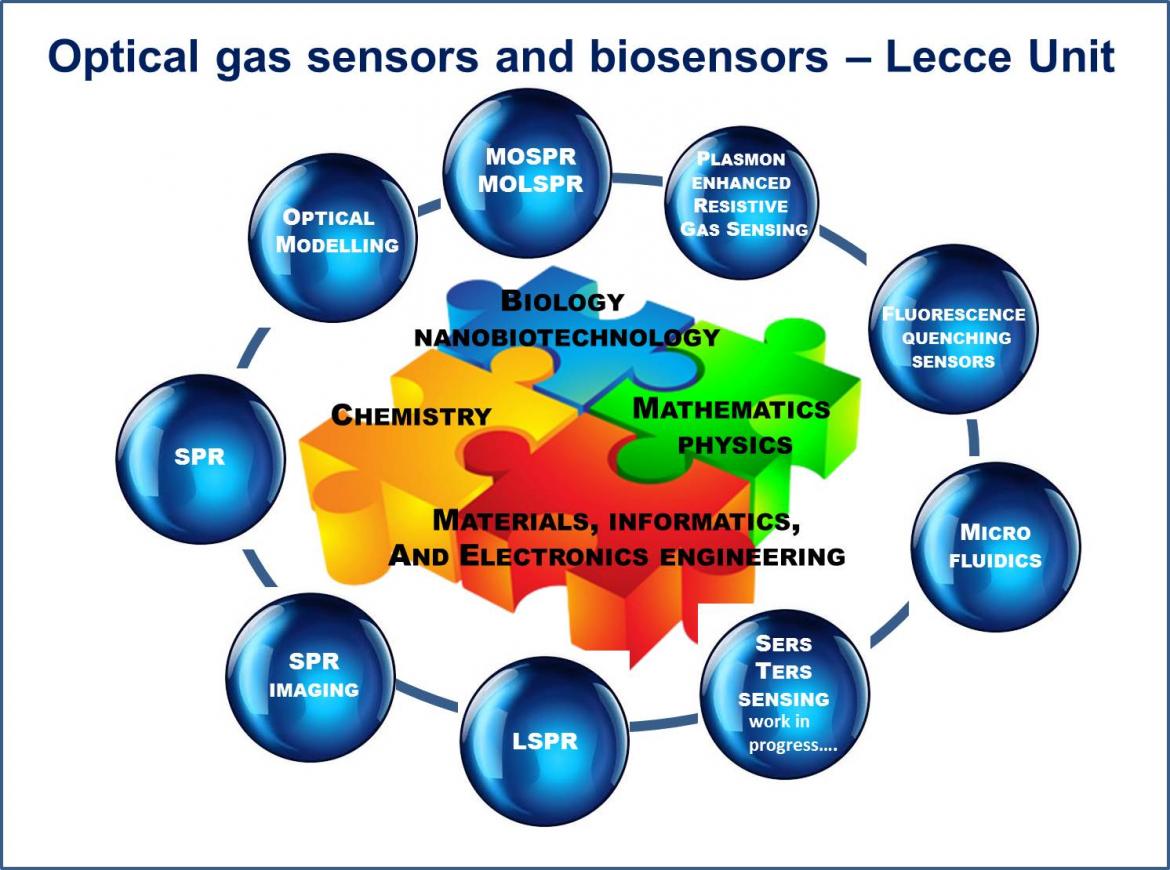
IMM Lecce has a strong expertise in 1) fabrication and functional characterization of plasmonic transducers for gas and bio-sensing applications 2) research and development of innovative transducing techniques and devices. In particular as regards the first point the expertise moves towards: study of critical parameters of plasmonic transducers; study and optimization of plasmonically-active noble metal substrates for SERS and TERS spectrospcopy; theoretically modelling tools based on finite elements methods; biofunctionalisation of nanosensors surfaces.
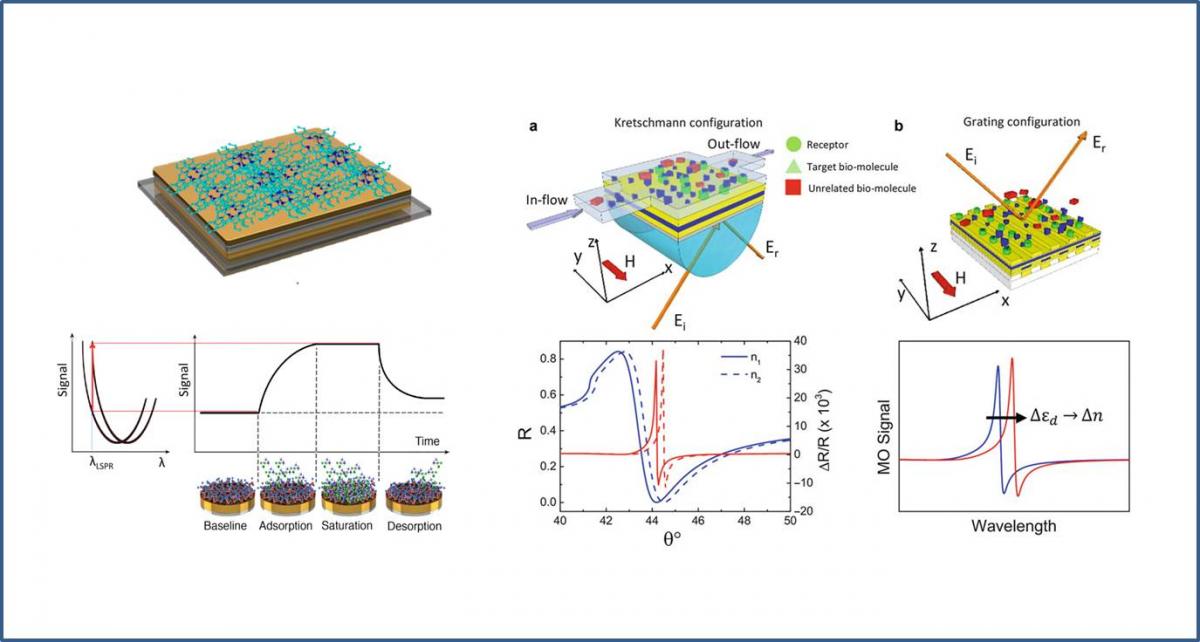
As regards the second point the researches involve the development of innovative optical transducing techniques to create optical systems for high-performance optical gas and biosensors. The main techniques are: Optical Absorption /Fluorescence– based techniques, Luminescence quenching -based sensing techniques, modulated spectroscopies- based techniques (in progress); Plasmon- based sensing techniques (sensors based on Propagating Surface Plasmons and on Localised Surface Plasmons both in spectroscopy or imaging configuration, plasmonic sensors based on fiber optics );
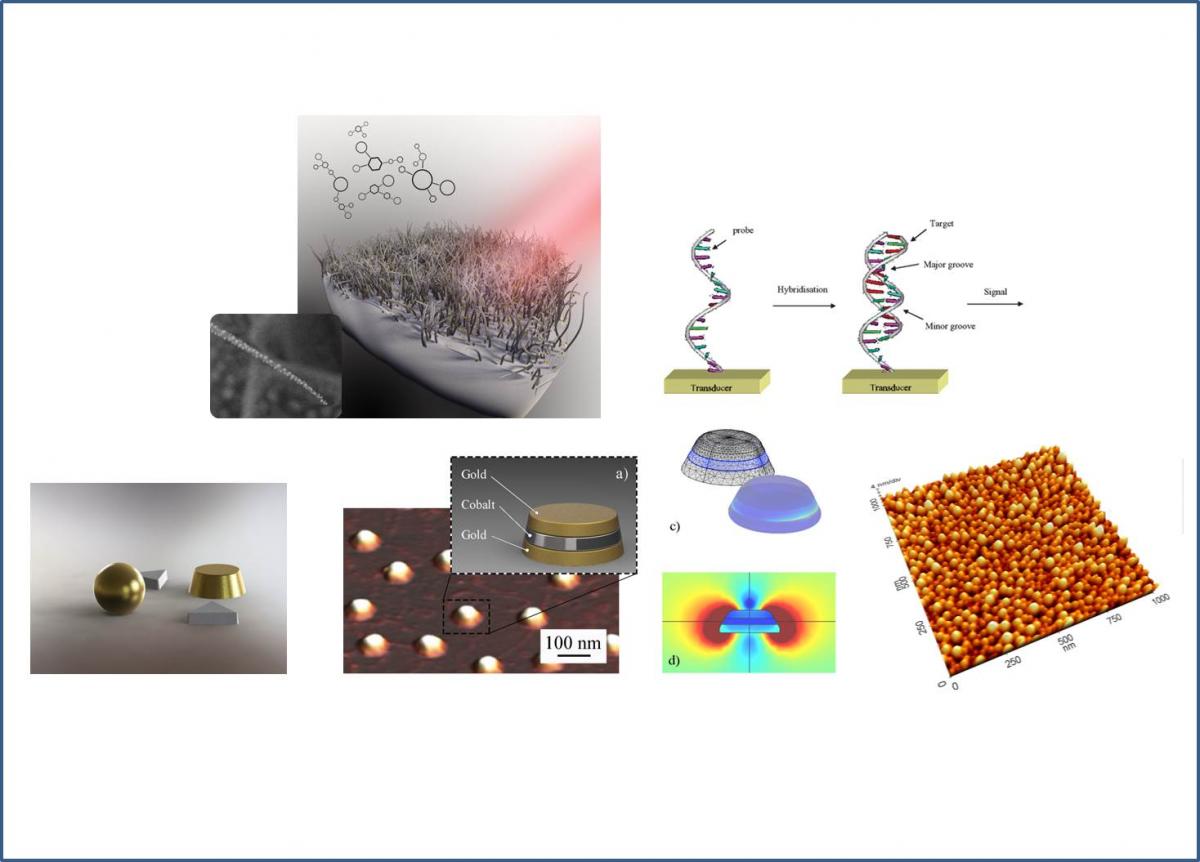
Modulation methods to improve the signal to noise ratio of the biosensing measurements: magneto-plasmonic modulation and all-optical modulation mechanisms; Plasmon-Enhanced Sensing and Photodetection (plasmon- enhanced spectroscopies), plasmon-enhanced luminescence/fluorescence, plasmon- enhanced resistive sensors. The above mentioned transducing methods and techniques are used for biosensor applications (study of nucleic acids, protein-protein interactions and studies of enzymatic activity) as well as for gas sensing applications. The application include: medical diagnostics (disease biomarkers, e.g. molecular biomarkers of cancers, Alzheimer’s disease, organ damage, etc., POCs devices ), environmental monitoring (pollutants and contaminants, e.g. atrazine, bisphenol A, benzo(a)pyren, nonylfenol, etc. ), and food safety (pathogens and toxins, e.g. Escherichia coli, Salmonella enterica, Lysteria monocytogenes, Staphylococcal enterotoxins, tetrodotoxin, etc.), cultural heritage.
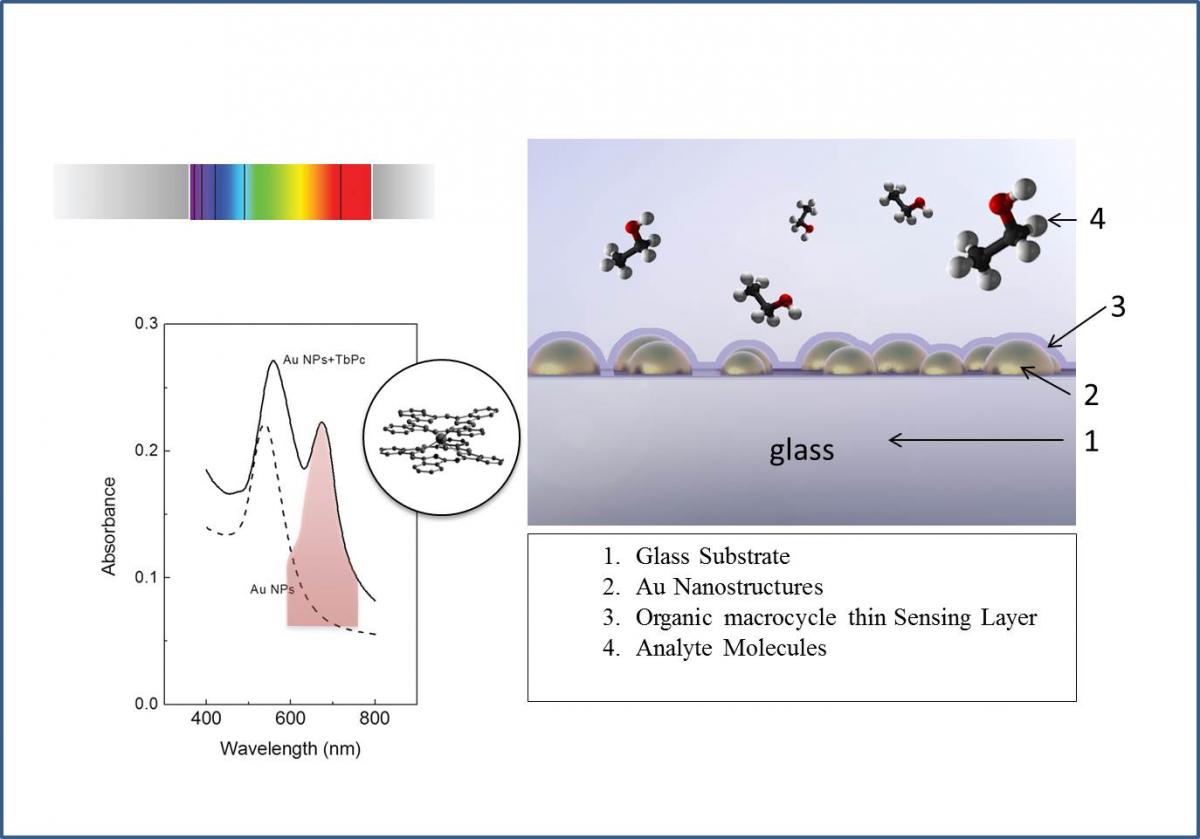
Competence in modelling, design and development of enabling technologies for the realization of microfluidic apparatus equipped of micro-reactors, valves, channels, and integrated optical VOCs and bio-sensing devices for pharmaceutical application in radiotherapy (PET) are acquired together to the development and validation of portable prototypes of optical sensors based on SPR transduction and relative consumables.
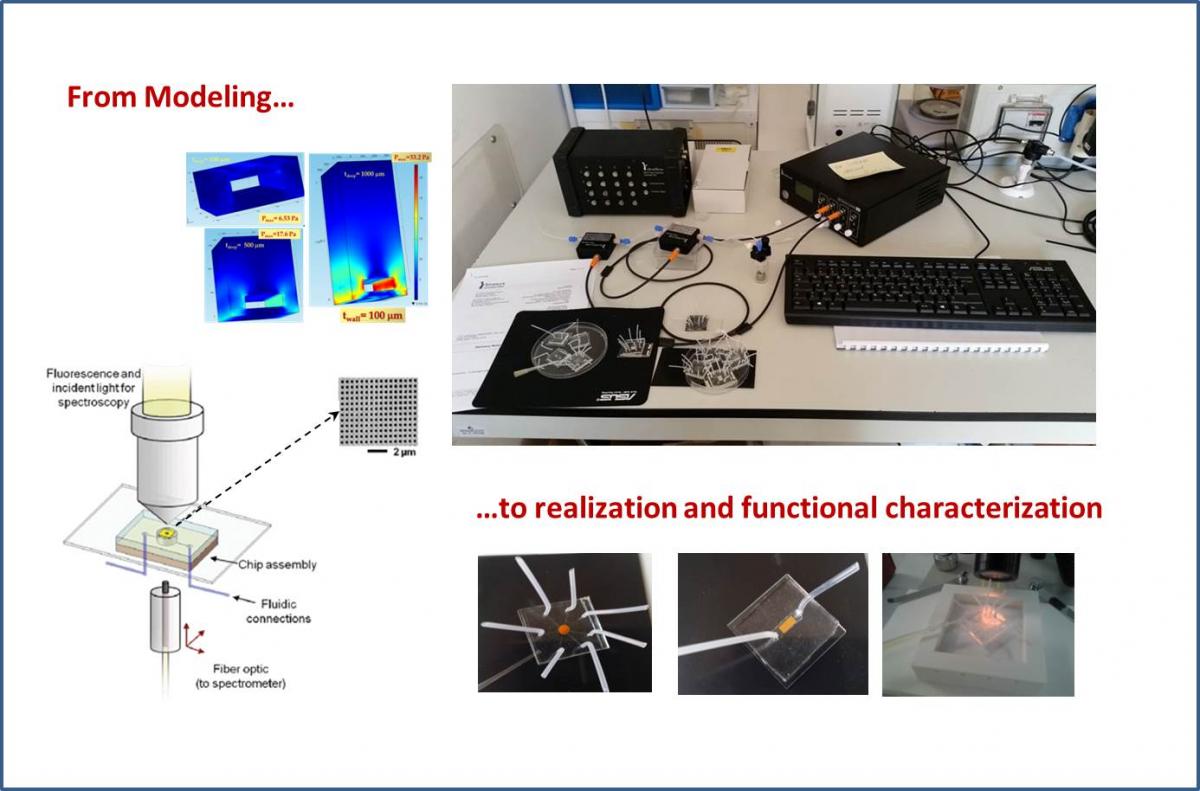
POC: roberto.rella@cnr.it; mariagrazia.manera@cnr.it; mauro.lomascolo@cnr.it; arianna.creti@cnr.it

